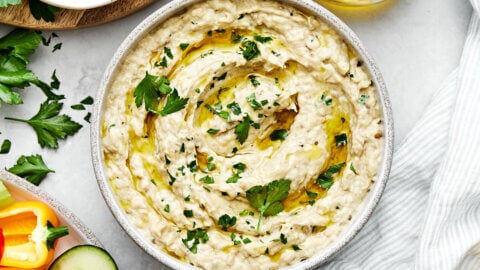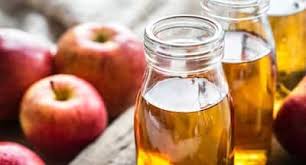Baba Ganoush Recipe: If you’ve ever tasted the creamy, smoky delight that is Baba Ganoush, you know how addictive it can be.
This Middle Eastern classic, made primarily from roasted eggplant and tahini, is a staple in many households. With its rich flavors and simple ingredients, it’s a perfect appetizer or snack that can elevate any meal.
Ready to make your own Baba Ganoush? Let’s dive into this foolproof, step-by-step guide!
Origins of Baba Ganoush
Baba Ganoush hails from the Levant region, which includes countries like Lebanon, Syria, and Jordan. Its name roughly translates to “pampered father,” a nod to its luxurious texture and comforting flavors.
The Unique Flavors of Baba Ganoush
The dish is known for its smoky undertones, creamy texture, and the nutty richness of tahini. A squeeze of lemon and a dash of garlic add brightness, making it a well-balanced dish that pairs beautifully with a variety of foods.
Ingredients for Baba Ganoush
To make Baba Ganoush, you’ll need:
- Eggplants (2 large)
- Tahini (¼ cup)
- Garlic cloves (2, minced)
- Lemon juice (2 tbsp, freshly squeezed)
- Olive oil (2 tbsp)
- Salt (to taste)
- Parsley (optional, for garnish)
Optional Add-Ins for Extra Flavor
If you want to experiment, try these add-ins:
- Smoked paprika for extra smokiness
- A pinch of cumin for warmth
- Pomegranate seeds for a burst of sweetness
How to Choose the Best Ingredients
Picking the Perfect Eggplant
The star of the show is the eggplant. Look for ones that are:
- Firm but slightly yielding when pressed
- Glossy with smooth skin
- Free of blemishes or soft spots
Choosing Fresh Tahini and Other Ingredients
Good-quality tahini makes all the difference. Opt for a brand with minimal ingredients (just sesame seeds and salt). Fresh lemons and olive oil will also enhance the flavor.
Step-by-Step Guide to Making Baba Ganoush
Step 1: Roasting the Eggplant
Begin by roasting your eggplants to achieve that signature smoky flavor. You can do this:
- On a grill for a charred, smoky taste.
- In an oven at 400°F (200°C) until the skin is wrinkled and the flesh is soft (about 35-40 minutes).
- Over an open flame on a gas stove for maximum smokiness.
Step 2: Removing the Skin and Mashing
Once cooled, peel off the skin of the eggplants. The flesh should be soft and easy to scoop out. Place it in a bowl and mash it with a fork or potato masher for a slightly chunky texture.
Step 3: Mixing the Ingredients
Add tahini, minced garlic, lemon juice, and olive oil to the mashed eggplant. Mix well until smooth and creamy.
Step 4: Adjusting the Seasoning
Taste your Baba Ganoush and adjust the seasoning. Add more salt, lemon juice, or garlic as needed.
Step 5: Serving and Garnishing
Transfer the mixture to a serving dish, drizzle with olive oil, and sprinkle with parsley, paprika, or pomegranate seeds for garnish.
Tips for Making Perfect Baba Ganoush
- Achieving the Ideal Smoky Flavor: Use a grill or open flame for roasting if possible.
- Avoiding Bitter Baba Ganoush: Choose young, fresh eggplants and remove any visible seeds.
Variations of Baba Ganoush
Adding Spices for a Twist
While the classic recipe is delicious, adding spices can bring new dimensions to the flavor. Try these options:
- Cumin: Adds a warm, earthy taste that complements the smokiness of the eggplant.
- Smoked Paprika: Enhances the smoky profile while adding a hint of spice.
- Red Chili Flakes: For those who enjoy a bit of heat.
Vegan-Friendly Modifications
Good news—Baba Ganoush is naturally vegan! To enhance its appeal to plant-based eaters, you can add toppings like roasted chickpeas or hemp seeds for added protein.
How to Serve Baba Ganoush
Pairing with Breads and Crackers
Baba Ganoush is incredibly versatile. Serve it with:
- Pita bread: A classic pairing. Serve warm or toasted for added texture.
- Flatbreads: Lavash or naan work beautifully.
- Crackers: A crunchy contrast to the creamy dip.
Incorporating Baba Ganoush in Meals
Don’t limit Baba Ganoush to a starter! Incorporate it into meals:
- Spread it in wraps or sandwiches as a flavorful base.
- Use it as a topping for grain bowls or salads.
- Serve it alongside grilled meats or roasted vegetables.
Baba Ganoush Storage Tips
Refrigerating Baba Ganoush
Store Baba Ganoush in an airtight container in the refrigerator. It will stay fresh for up to 3-4 days. Be sure to drizzle olive oil on top to maintain freshness and prevent drying out.
Freezing Baba Ganoush
For longer storage, Baba Ganoush can be frozen. Here’s how:
- Transfer it to a freezer-safe container.
- Cover the surface with plastic wrap before sealing the lid.
- Freeze for up to 3 months. Thaw in the refrigerator and stir well before serving.
Common Mistakes to Avoid
Overcooking the Eggplant
While roasting is key to the smoky flavor, overcooking can result in a mushy, watery texture. Keep an eye on the eggplant, ensuring the flesh is soft but not overly wet.
Using the Wrong Tahini
Bitter or low-quality tahini can ruin the dish. Opt for fresh, high-quality tahini for the best flavor.
Health Benefits of Baba Ganoush
Nutritional Breakdown
Baba Ganoush is not only delicious but also highly nutritious. It’s rich in:
- Fiber: Thanks to the eggplant, aiding digestion.
- Healthy Fats: From tahini and olive oil, promoting heart health.
- Antioxidants: Particularly in eggplants, which contain nasunin, known for brain health.
Why Baba Ganoush is a Healthy Snack
Low in calories and carbs, Baba Ganoush is an excellent snack for those following weight loss or low-carb diets. It’s also naturally gluten-free and vegan, making it suitable for a variety of dietary needs.
FAQs about Baba Ganoush Recipe
1. What is Baba Ganoush?
Baba Ganoush is a creamy, smoky eggplant dip that originates from Middle Eastern cuisine. It typically consists of roasted eggplant, tahini, garlic, lemon juice, and various seasonings, blended together to create a smooth and savory spread.
2. How do I choose the right eggplant for Baba Ganoush?
For the best Baba Ganoush, select eggplants that are firm, glossy, and heavy for their size. Avoid eggplants with dents or soft spots. Larger eggplants tend to be more bitter, which can be a desirable trait for this dish, adding depth to its flavor.
3. How do you get the smoky flavor in Baba Ganoush?
The smoky flavor in Baba Ganoush is achieved by roasting the eggplant over an open flame or under a broiler until the skin is charred. This technique allows the flesh to absorb a rich, smoky aroma that’s essential for authentic Baba Ganoush.
4. Can I make Baba Ganoush without tahini?
Yes, while tahini (sesame paste) is traditional, you can substitute it with Greek yogurt or leave it out entirely for a lighter version. The result won’t be as rich, but it will still be tasty.
5. What are some variations of Baba Ganoush?
You can add spices like cumin or smoked paprika to introduce different flavors. Incorporating herbs like parsley or mint can add freshness to the dip. For a spicy kick, blend in a bit of fresh jalapeño or red pepper flakes.
6. How long can I store Baba Ganoush?
Baba Ganoush can be stored in an airtight container in the refrigerator for up to four days. It may separate slightly, so stir well before serving.
7. Is Baba Ganoush healthy?
Baba Ganoush is a healthy option as it’s made primarily from eggplant, which is low in calories and rich in fiber. It also contains tahini and olive oil, which provide healthy fats. Enjoy it as part of a balanced diet.
Final Thoughts on Making Baba Ganoush
There you have it—a simple, step-by-step guide to creating the perfect Baba Ganoush. With its rich, smoky flavors and creamy texture, this dish is sure to be a hit whether you’re entertaining guests or enjoying a quiet night in. Don’t be afraid to experiment with flavors and serving ideas to make it your own. Ready to get started? Roll up your sleeves and give this recipe a try—you won’t regret it!



